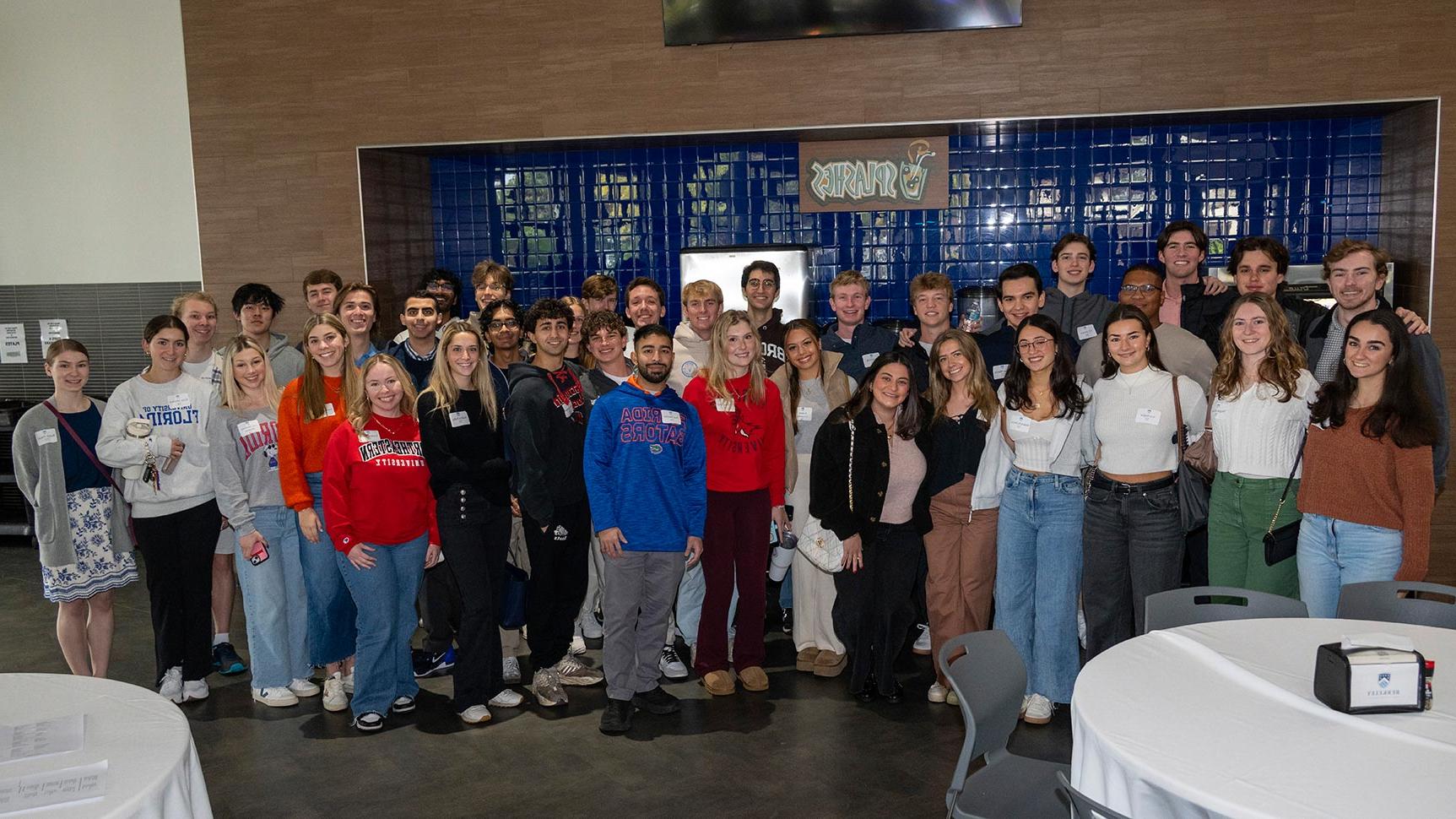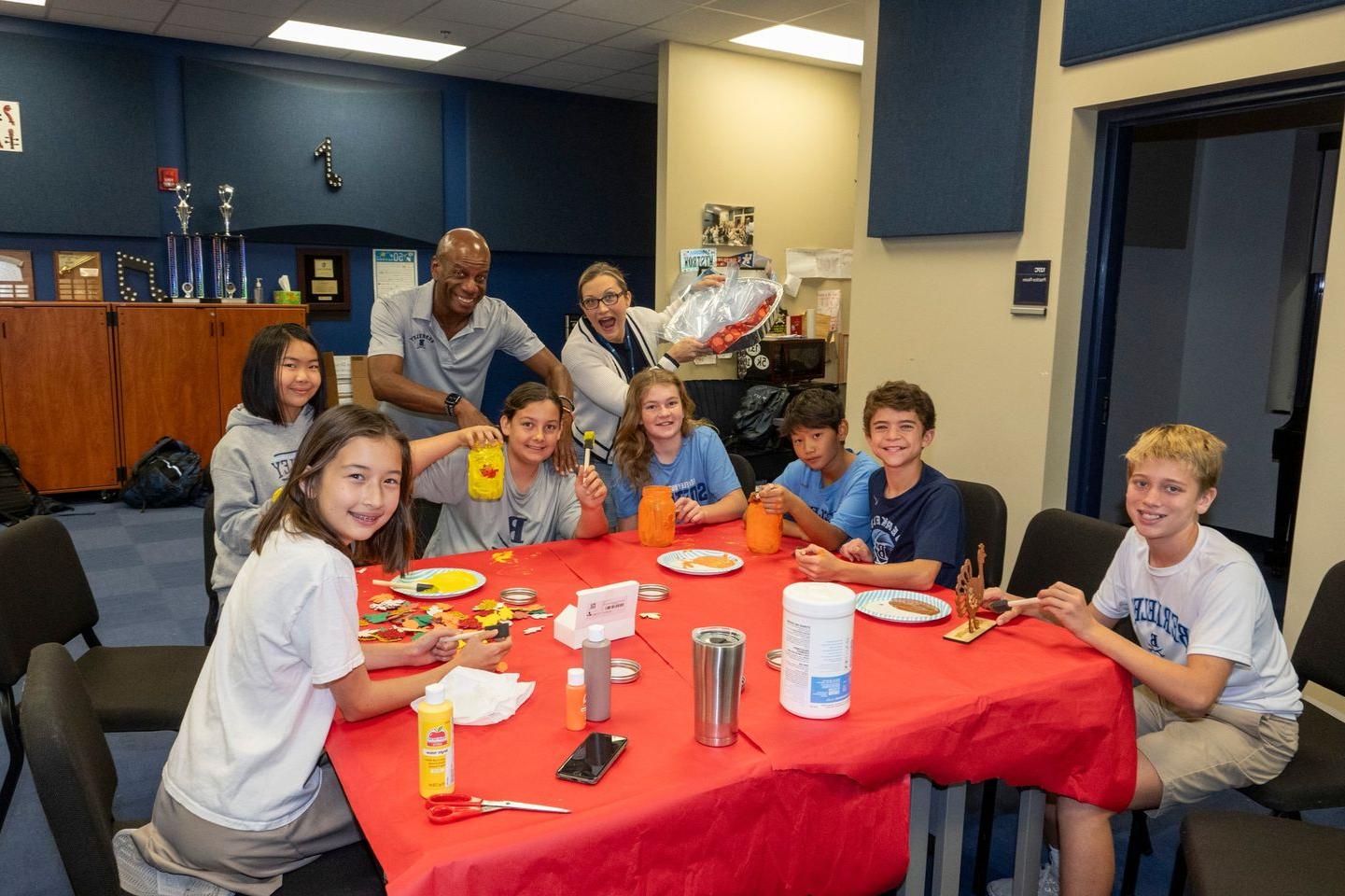What’s Happening at Berkeley
How Cameron Kenny ’12 Has Taken on the Challenge of Mountains and Marathons
Dec 20, 2024
Cameron Kenny ’12 has had a love for the outdoors almost as far back as he can remember. Growing up in Florida, he took full advantage of life on the water. However, as much as he loved ocean life, at age 10, he became obsessed with climbing Mt. Everest.
Cameron continued to dream about Everest throughout his teens and realized that in order to achieve his goal of summiting the world’s tallest mountain, he would have to make a plan that involved some smaller peaks first. He began following the Sherpa and Western guides, tracking their summer expeditions.
After finishing his freshman year of college in 2013, Cameron was given the gift of a trip to Tanzania with his cousin. He was there for nine days, eight of which were spent on Mt. Kilimanjaro. After summiting that mountain at age 19, he knew he would climb Mt. Everest one day.
After college, Cameron moved to New York City and worked there for a few years before he attempted his next mountain in February of 2020 in Colorado’s Rocky Mountains. Cameron and his guide went through a year of planning, months of logistics, and days of travel before arriving in Estes Park to climb Longs Peak. The mountain is notoriously technical in good weather, but after three days of constant snowfall, it proved to be too difficult and the decision was made to abort the effort. To this day, it is the only mountain that he tried and failed to summit.
Next, he went on to climb the Grand Tetons in Wyoming, Mt. Rainier in Washington, and then on to Mt. Denali in Alaska. Denali would be his second of the Seven Summits.
The Denali expedition lasted 17 days. He carried a 70-pound bag and dragged a 100-pound sled for 14 of those days. The average temperature hovered around 0 degrees. Mt. Denali is often considered the ultimate testing ground for attempting a summit of Mt. Everest. The various peaks mentioned may seem random, but they were all chosen as strategic stepping stones to achieve his goal of conquering Mt. Everest.
Everest sits on the border of Nepal and Tibet, and climbers have the choice of summiting from the south through Nepal or from Tibet in the north. More than 80% of climbers choose to summit through Nepal. Every year in the late spring and early summer months, nearly 1,000 people from all over the world meet in the Khumbu Valley to attempt to summit the famous peak. Almost overnight, the cold, quiet Khumbu Valley turns into a tent city made up of individuals of all nationalities, genders, and ages, who come together to achieve the dream of standing on top of the world.
Cameron left New York on April 2, 2022 and flew to Kathmandu, Nepal, to meet his team. They spent the next five days there acclimating to the altitude and organizing their equipment. On April 7, they loaded their gear into small planes and flew to one of the most dangerous airports in the world—Tenzing-Hillary Airport in Lukla. The runway there is 1,700 feet long with an 11% grade on the edge of a cliff. Cameron and his team spent the next nine days on foot, hiking and sleeping in the Khumbu Valley trekking toward Everest Base Camp. They arrived at Base Camp (with an elevation of 17,000 feet) on April 19. Cameron was overcome with emotion and feelings he would never forget, since he had spent so much of his life reading and dreaming about this place and was finally there experiencing it in person.
When preparing to climb Mt. Everest, climbers spend 40 days ascending and descending the mountain to acclimate to the drastic decrease in oxygen. The human body is not meant to live at such a high elevation, and people need time to adjust to the thin air. The air at that altitude contains 80% less oxygen than the air Cameron was accustomed to breathing in New York City.
Mt. Everest is broken down into five camps:
Base Camp – 17,000 feet
Camp 1 – 20,000 feet
Camp 2 – 21,000 feet
Camp 3 – 26,000 feet
Camp 4 – 27,000 feet
Every rotation requires climbers to scale through the Khumbu Icefall prior to arriving at Camp 1. The Icefall is a collection of massive ice towers known as seracs. Seracs are unstable and extremely unpredictable as they are always moving. It is said that the Icefall slides down the mountain seven inches each day, which makes it an incredibly dangerous part of the climb. Guides and climbers use ladders to cross huge crevasses in the ice and snow, and they typically pass through this part of the mountain in the middle of the night when conditions are coldest to minimize the risk of avalanche.
After completing his third and final rotation up and down the mountain, Cameron finally climbed to Camp 4, where he spent the night. He and his team awoke at 1 a.m. to make the push to the summit. It took six hours climbing up the southern wall to the balcony and past the famous Hillary Step before he reached his goal. On May 20, 2022, for a few short minutes, he stood on top of the world and stared into Nepal below, and then into China as far as he could see.
After he and his team summited Mt. Everest, they descended down to Camp 4, arriving around lunchtime, and slept. When their alarms sounded at 1 a.m., most of the team set off for home, but Cameron and his sherpa made other plans.
Roughly 80% of the route up to Mt. Everest is shared by the fourth tallest mountain in the world, Mt. Lhotse, which is rarely climbed. Just 15 hours after summiting Everest, Cameron, his guide, and two sherpas decided they would try to summit Mt. Lhotse.
So, on May 21, they started their ascent and spent five hours climbing the face of Mt. Lhotse (a 2,500-foot straight vertical climb). They raced against the clock, moving as quickly as they could to complete their goal in under 24 hours. With 10 minutes to spare, Cameron earned the distinction of being one of only 11 Americans (and one of 68 people worldwide) to have summited both Everest and Lhotse in 24 hours.
As a young boy, Cameron dreamed of summiting Everest. His hard work, determination, and the support of so many made that dream a reality. Cameron knew that he wanted to use the platform of this achievement to champion a cause that he and his family were passionate about upholding. He set out to raise $75,000 for the Juvenile Diabetes Research Foundation (JDRF), as one of his family members has type 1 diabetes. Many family members, friends of the family (and many were Berkeley friends!), and corporate sponsors supported Cameron’s dream—and he exceeded his goal, raising almost $150,000 for JDRF.
After the trip to Everest, Cameron missed the training that had taken so much of his time and energy, so he became interested in participating in a variety of endurance events, including Iron Man races, the Leadville 100 in Colorado, and marathons. Most recently, he and his brother, Andrew Kenny ’15, completed the New York City Marathon in November 2023.
After realizing his dream of summiting the world’s tallest peak at such an early age, Cameron has no plans of slowing down. He moved to Dallas in March and continues to train for his next adventure.













